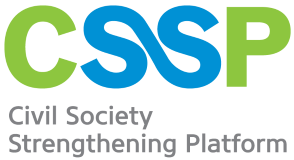Poor results of the national SOS phone / Loš rad nacionalnog SOS telefona

29th of August, 2019: The report of the Autonomous Women’s Center indicates that the number of received calls in the observed period is twice less than the number displayed by the newly formed SOS phone, and amounts to 934 calls (155.7 calls per month). The other 861 calls, made up of “test” calls, should not be counted and displayed because they do not originate from callers.
Although the newly formed national SOS phone is available 24/7, it receives only a fifth of calls made annually by women with experience of violence in Serbia, and provides seven times less services than the number of services provided by women’s SOS phones, which are more but daily available less hours and mostly weekdays due to lack of funding. This, without a doubt, justifies not only the existence, but also the state financing of the operation of women’s SOS phones in Serbia, which is not the case.
The First Independent Report also briefly outlines the way in which a new national SOS telephone was established within the social care institution – the Infant, Child and Youth Care Center, despite the fact that there were already six licensed providers of this service in the non-governmental sector. Comparable data indicate that there was no need to establish a new national SOS telephone within a social protection institution that had no prior experience in providing this service, and to the need for the existence and state funding of the operation of women’s SOS phones within the Women Against Violence Network, which is not currently the case.
Although the Minister announced that this service would be “intelligent” and would “learn from everyday experience” when opening the newly-formed national SOS phone, this was obviously not the case, and electronic records should be provided for starters so that the provider could keep up-to-date and accurate information and regularly reports to the public.
——————————
U izveštaju Autonomnog ženskog centra se ukazuje na to da je broj primljenih poziva u posmatranom periodu dva puta manji od broja koji prikazuje novoformirani SOS telefon, i iznosi 934 poziva (155,7 poziva prosečno za mesec dana). Ostalih 861 poziv, koji čine „testirajući“ pozivi, ne bi trebalo brojati i prikazivati, jer ne potiču od pozivateljki.
Iako je novoformirani nacionalni SOS telefon dostupan 24/7, on prima tek petinu poziva koje na godišnjem nivou upute žene sa iskustvom nasilja u Srbiji, i pruži sedam puta manje usluga od broja usluga koje pružaju ženski SOS telefoni, kojih ima više, ali su dnevno dostupni manje sati i uglavnom radnim danima, zbog nedostatka finansijskih sredstava. To, bez svake sumnje, opravdava, ne samo postojanje, već i državno finasiranje rada ženskih SOS telefona u Srbiji, što nije slučaj.
U Prvom nezavisnom izveštaju kratko je prikazan i način na koji je uspostavljen novi nacionalni SOS telefon u okviru ustanove socijalne zaštite – Centar za brigu o odojčadi, deci i mladima, uprkos činjenici da je pre toga već postojalo šest licenciranih pružalaca ove usluge u nevladinom sektoru. Uporedivi podaci upućuju na to da nije postojala potreba za formiranjem novog nacionalnog SOS telefona u okviru ustanove socijalne zaštite koja nije imala nikakvo prethodno isksutvo u pružanju ove usluge, kao i na potrebu postojanja i državnog finansiranja rada ženskih SOS telefona u okviru Mreže žene protiv nasilja, što aktuelno nije slučaj.
Iako je minister pri otvaranju novoformiranog nacionalnog SOS telefona najavio da će ova usluga biti “inteligentna” i da će “učiti iz svakodnevnog iskustva”, to očigledno nije slučaj, a za početak bi trebalo obezbediti elektronsku evidenciju podataka, kako bi pružalac mogao da vodi ažurne i tačne podatke i o tome redovno izveštava javnost.
